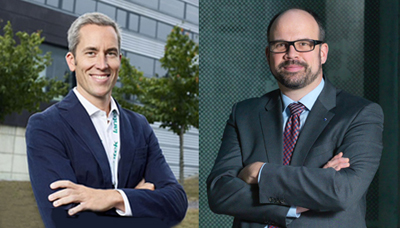
Trumpf acquires and partners with software firm Lantek
source:optics.org
keywords:
Time:2021-06-29
High-tech company Trumpf has acquired software house Lantek, headquartered in Vitoria-Gasteiz, Spain, which develops software for sheet metal processing, independent of the machine manufacturer. Financial details of the transaction were not disclosed.
“Trumpf is opening up to customers’ production ecosystems with this acquisition,” said Thomas Schneider, Managing Director of Machine Tool Development at the firm. “Our customers’ process is our focus and with Lantek, we comprehensively cover the sheet metal process chain, even with machines from different manufacturers.”
After participating in the development of umati, the open machine data interface, the development of omlox, the open positioning standard, and the cooperation with intralogistics expert Jungheinrich on automated guided vehicles, the cooperation with Lantek is a “step towards process optimization and connectivity for the sheet metal production of the future,” Schneider added.
Alberto López de Biñaspre, CEO of Lantek, added, “Lantek has been leading the sheet metal software for 35 years thanks to its ability to bring the best manufacturing solutions to any cutting machine. Our goal will continue to be assuring interconnectivity and independency between machine tool builders.”
Competency bundle

Lantek’s CEO López de Biñaspre and Trump’s Thomas Schneider.
“Our customers benefit from a close exchange in the key technologies of the future AI, data models and holistic process control. This enables us to bundle our competencies and develop software for the future of sheet metal production,” he said.
The family-owned software specialist Lantek was founded in 1986 and is based in Spain with 20 locations in 14 countries. More than 220 employees develop, implement, and maintain software for sheet metal and metalworking with any cutting technologies, such as CAD, CAM, MES and ERP solutions.
Lantek will continue to operate under its current name. An integration under the Trumpf brand is not planned and Lantek continues committed to neutrality and independence from all machine tool builders.
New 3D printer enables mass production
Trumpf has launched the new series of its TruPrint 3000 3D printing system at a virtual customer event. The medium-format machine uses powder-bed-based laser melting to produce parts with a diameter of up to 300 mm and a height of up to 400 mm.
It can handle all weldable materials including steels, nickel-based alloys, titanium and aluminum. “We’ve improved key aspects of the TruPrint 3000 to tailor it even more closely to the quality requirements, certifications and production processes of various industries,” said Klaus Parey, managing director of Trumpf Additive Manufacturing.

The printer can be equipped with a second laser to almost double productivity.
The new printer can be equipped with a second laser that almost doubles its productivity. “The multilaser option significantly reduces part costs – that’s how we help our customers make the move into mass production,” added Parey.
Two 500-watt lasers scan the machine’s entire build chamber in parallel. This makes production faster and more efficient regardless of the number and geometries of the parts. With the Automatic Multilaser Alignment option, the system can automatically monitor the multilaser scan fields during the build stage and calibrate them to each other.
The developers at Trumpf have transformed the movement of inert gas through the TruPrint 3000. The way in which it flows through the machine from back to front is now more uniform. As well as boosting the quality of printed parts, this also allows the operator to remove excess powder from the part while it is still inside the machine.
Previous models required the operator to take the part out and remove the powder at a separate station. The new machine is designed to process the powder in a shielded environment, using an inert gas to prevent the powder from becoming contaminated during the build. This is a major advantage for sensitive industries such as medical device manufacturing.
- RoboSense is to Produce the First Chinese Multi-beam LiDAR
- China is to Accelerate the Development of Laser Hardening Application
- Han’s Laser Buys Canadian Fiber Specialist CorActive
- SPI Lasers continues it expansion in China, appointing a dedicated Sales Director
- Laser Coating Removal Robot for Aircraft
 FISBA exhibits Customized Solutions for Minimally Invasive Medical Endoscopic Devices at COMPAMED in
FISBA exhibits Customized Solutions for Minimally Invasive Medical Endoscopic Devices at COMPAMED in New Active Alignment System for the Coupling of Photonic Structures to Fiber Arrays
New Active Alignment System for the Coupling of Photonic Structures to Fiber Arrays A new industrial compression module by Amplitude
A new industrial compression module by Amplitude Menhir Photonics Introduces the MENHIR-1550 The Industry's First Turnkey Femtosecond Laser of
Menhir Photonics Introduces the MENHIR-1550 The Industry's First Turnkey Femtosecond Laser of Shenzhen DNE Laser introduced new generation D-FAST cutting machine (12000 W)
more>>
Shenzhen DNE Laser introduced new generation D-FAST cutting machine (12000 W)
more>>
